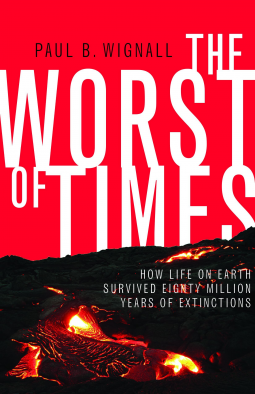
The Worst of Times
How Life on Earth Survived Eighty Million Years of Extinctions
by Paul B. Wignall
This title was previously available on NetGalley and is now archived.
Send NetGalley books directly to your Kindle or Kindle app
1
To read on a Kindle or Kindle app, please add kindle@netgalley.com as an approved email address to receive files in your Amazon account. Click here for step-by-step instructions.
2
Also find your Kindle email address within your Amazon account, and enter it here.
Pub Date Oct 21 2015 | Archive Date Aug 10 2015
Description
Two hundred and sixty million years ago, life on Earth suffered wave after wave of cataclysmic extinctions, with the worst—the end-Permian extinction—wiping out nearly every species on the planet. The Worst of Times delves into the mystery behind these extinctions and sheds light on the fateful role the primeval supercontinent, known as Pangea, may have played in causing these global catastrophes.
Drawing on the latest discoveries as well as his own firsthand experiences conducting field expeditions to remote corners of the world, Paul Wignall reveals what scientists are only now beginning to understand about the most prolonged and calamitous period of environmental crisis in Earth’s history. He describes how a series of unprecedented extinction events swept across the planet in a span of eighty million years, rapidly killing marine and terrestrial life on a scale more devastating than the dinosaur extinctions that would come later. Wignall shows how these extinctions—some of which have only recently been discovered—all coincided with gigantic volcanic eruptions of basalt lavas that occurred when the world’s landmasses were united into a single vast expanse.
Unraveling one of the great enigmas of ancient Earth, The Worst of Times also explains how the splitting apart of Pangea into the continents we know today ushered in a new age of vibrant and more resilient life on our planet.
Paul B. Wignall is professor of palaeoenvironments at the University of Leeds. He has been investigating mass extinctions for more than twenty-five years, a scientific quest that has taken him to dozens of countries around the world. The coauthor of Mass Extinctions and Their Aftermath, he lives in Leeds.
Advance Praise
“Wignall covers everything from volcanic eruptions and the carbon cycle to climate reconstruction and the possible role the Pangea supercontinent may have played in these devastating events. This is a story well told.”—Michael J. Benton, author of The History of Life: A Very Short Introduction
“Wignall does a wonderful job of describing the mass extinctions from the Middle Permian through the Jurassic. His personal contributions to this field have been influential, and it is great fun to read about the subject through his eyes and the experiences of his research team. I really enjoyed this informative and entertaining book.”—Jonathan Payne, Stanford University
Available Editions
| EDITION | Other Format |
| ISBN | 9780691142098 |
| PRICE | $27.95 (USD) |




